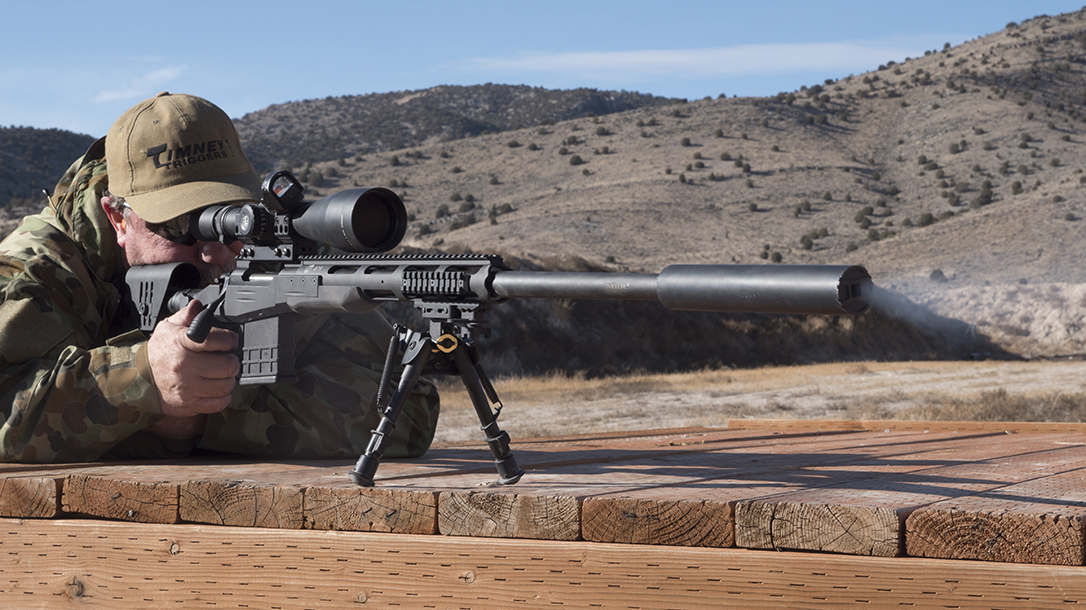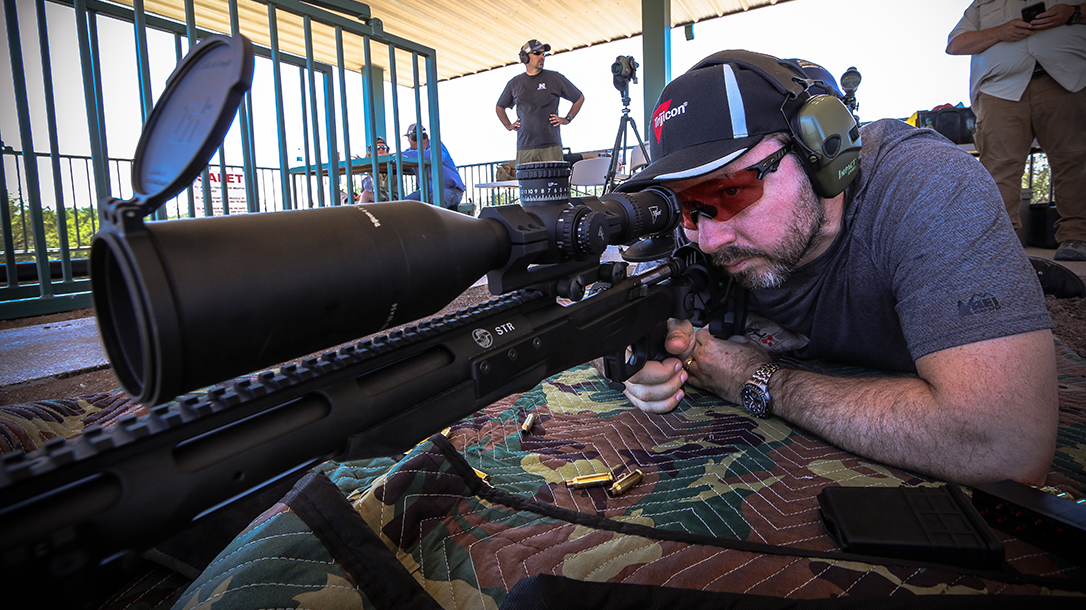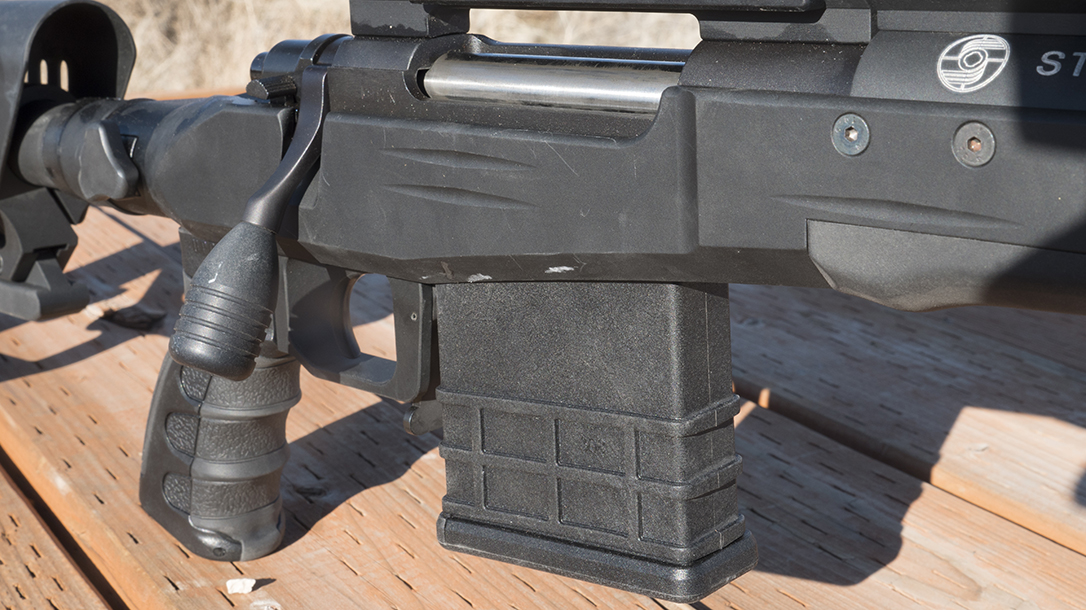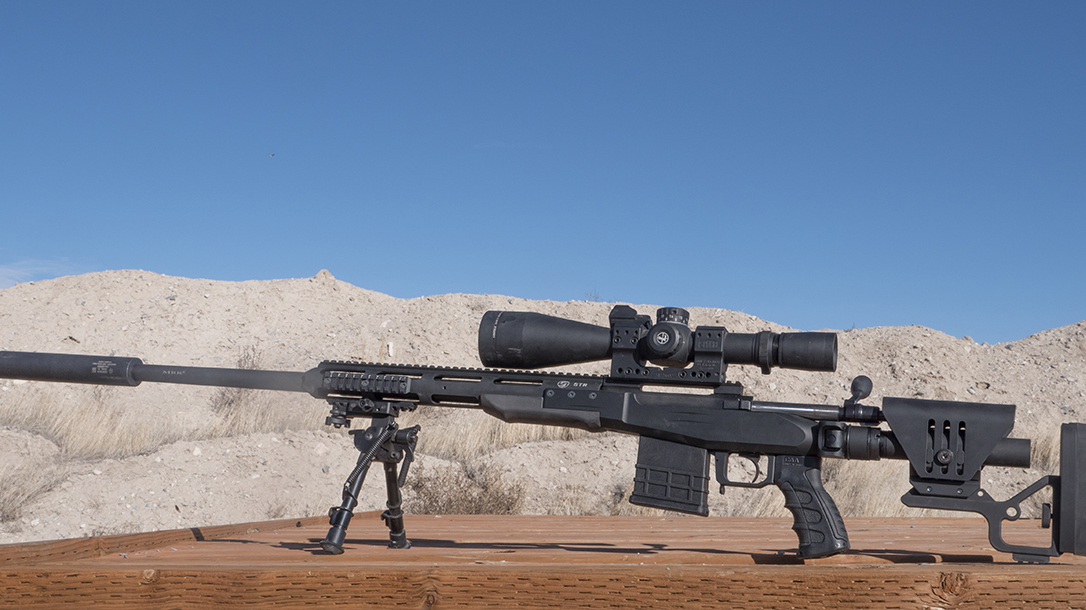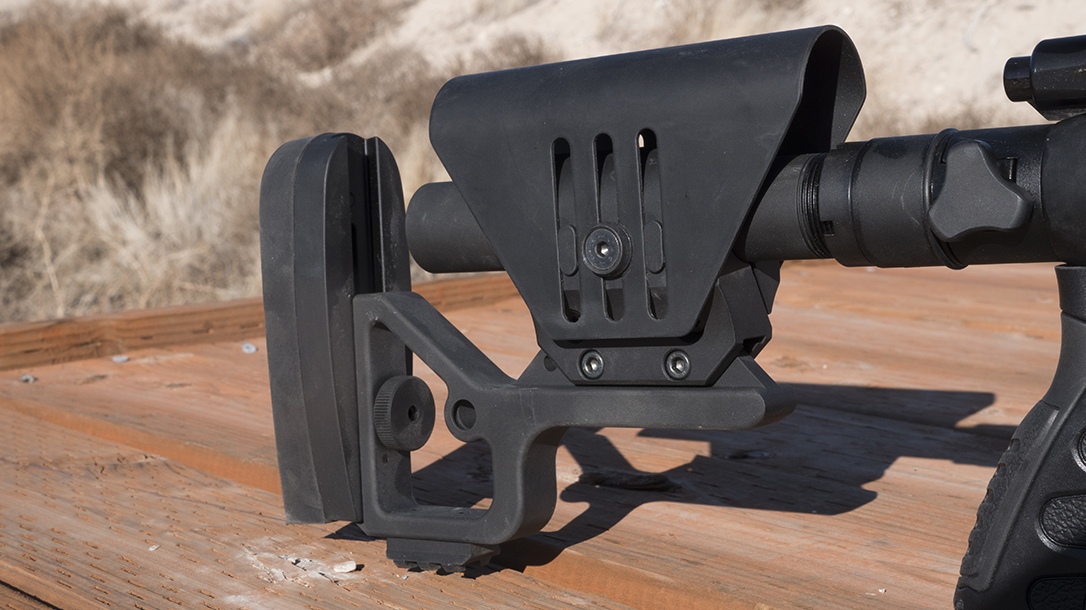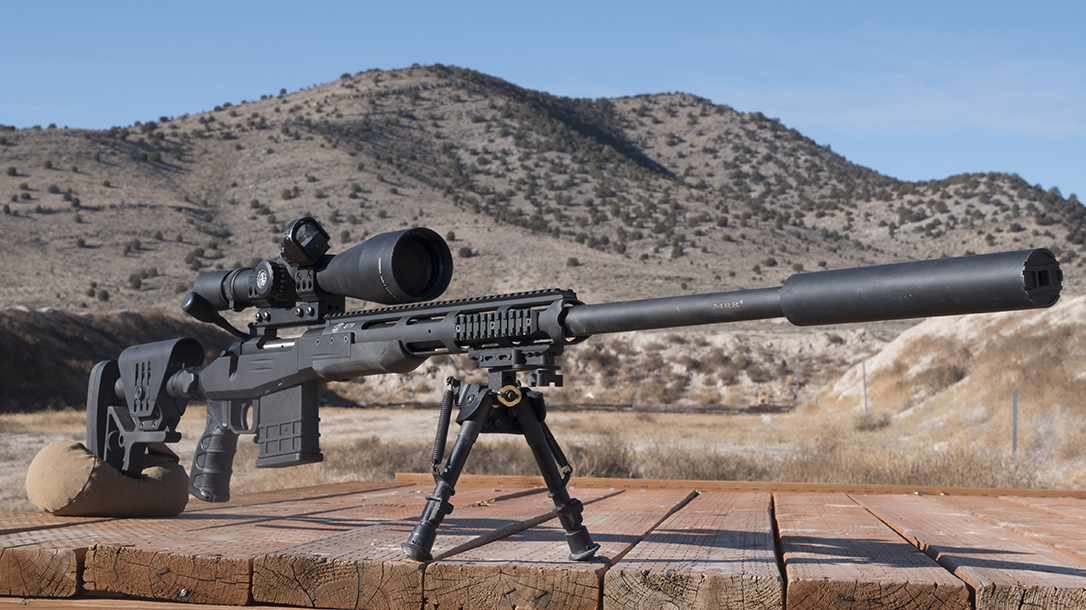Precision rifles have changed considerably over the last several years. Early in my law enforcement career, 24-inch barrels were common on these rifles, and if you were engaging at farther distances, a 26-inch barrel might be used. You would see 22-inch barrels on lightweight hunting rifles, but anything shorter for tactical purposes was limited to “short-range” engagements. In fact, I still remember a recognized “expert” telling me that anything shorter than 22 inches was useless beyond 200 yards.
Thankfully, real-world experience has debunked most of the mythology surrounding barrel length.
Advertisement — Continue Reading Below
Today’s Rifles
Many agencies today are fielding .308 rifles with barrels as short as 16 inches with great success. Hunters are taking game with similar barrels at 300 to 500 yards. Barrels have also gotten lighter, like stocks and even bullets. Bullet technology has improved exponentially for increased effectiveness. Now you’ll find rifles with 18- to 20-inch barrels for most practical applications, with longer barrels for longer ranges.
You can reach targets 1,000 yards away with shorter barrels—I do it all the time—but if you want to be precise at that distance and beyond, a longer barrel and heavier bullets will make your life a lot easier. If you’re firing from prone, you’ll want a heavier rifle to help soak up recoil and high-velocity ammo.
Longer and thicker barrels will also improve your shot-to-shot consistency, especially if you’re using a .308 in competition or for tactical purposes. Which brings us to the new Sabatti STR being imported by the Italian Firearms Group (IFG).
Advertisement — Continue Reading Below
Sabatti STR Features
The Sabatti family has been making firearms in the Val Trompia region in Italy since the early 1700s. While the company is mostly known for its hunting and target rifles today, the STR is designed for tactical operations. In fact, STR stands for “Sabatti Tactical Rifle.”
Multi-Radial Rifling
It starts with a heavy-contour, cold-hammer-forged, 26-inch barrel that uses the company’s Multi-Radial Rifling (MRR). This rifling essentially uses two different radiuses that alternate to guide the projectile without any of the sharp edges found in more conventional rifling. This lack of sharp edges means those who lap their barrels can do so without worrying about ruining the rifling. Forcing cone geometry changes also guide the bullet in the rifling, centering it more precisely for greater consistency. This results in less bullet deformation and consistent shot-to-shot placement.
Barrel
The barrel’s 1-in-11.5-inch twist rate is optimized for match-grade 175- to 185-grain bullets. Sabatti also includes a muzzle brake, and the muzzle has 5/8×24-tpi threading for other devices like sound suppressors.
Advertisement — Continue Reading Below
Action
Sabatti’s signature short action comes standard with a clean-breaking single-stage trigger, though two-stage units are available. The action uses AICS-pattern magazines, and Sabatti includes a seven-round magazine with the gun. The 20-MOA top rail merges with the AR-style handguard’s to offer lots of real estate for optics and night-vision devices. The sides and bottom of the forend are drilled and tapped for short rail sections, and three come installed on the gun.
Others
The chassis also comes with a Command Arms Accessories (CAA) pistol grip, but any AR-style grip can be installed. At the rear you’ll find a folding aluminum buttstock that can be adjusted for length of pull, cheek height and buttpad height. The folding mechanism is sturdy, tight and locked in place via a large knob. Loosen the knob and the stock can be folded for greater mobility.
Advertisement — Continue Reading Below
Optics
For testing, I installed a Leupold 3.5-25x56mm Mark 8 scope in a 20-MOA Spuhr ISMS mount. Coupled with the 20-MOA scope rail, this optic gets me out to the limits of the .308 cartridge using factory ammunition. The Leupold Mark 8 scope also uses a Horus T3 reticle that makes it easy to call wind and provides clear and accessible holds for both wind and elevation.
I added a Trijicon RMR on top of the Spuhr mount in an offset position to help me locate long-range targets without changing the scope’s magnification. And for a suppressor, I chose Gemtech’s Dagger, which weighs in at a mere 14.8 ounces, making for a quiet and soft-shooting rifle. Finally, I ran the Sabatti STR with several AICS magazines to test its reliability.
On the Range With the Sabatti STR
Sabatti states that its MRR rifling helps increase ammo velocities, so that’s where I started on the range. And it turns out, the barrel seemed to do just that.
Advertisement — Continue Reading Below
Compared to a 26-inch-barreled Remington 700, the STR’s velocity figures were higher by 20 to 75 fps. The most significant difference came from the Federal Gold Medal Bergers at almost 100 fps. Factory-rated for 2,600 fps, my MagnetoSpeed V3 clocked an average of 2,685 fps from the STR with a high of 2,700 fps. Granted, the elevation here is 5,500 feet, but that’s still pretty impressive.
Interestingly, the 125- and 155-grain rounds saw very little increases. The MRR rifling seemed to have more of an effect on the larger bullets, which proved valuable because I did most of my long-range shooting with 175- and 185-grain rounds. Shooting out to 1,300 yards, this ammo required 14.7 mils of elevation at 2,600 fps and 13.7 mils at 2,700 fps.
Groupings
The STR’s accuracy was excellent across the board. My best group came with Federal’s 185-grain Gold Medal Berger rounds, measuring just 0.37 inches at 100 yards. This load held well under 1 MOA out to 1,300 yards, creating a 2.5-inch group at 550 yards. Similar results came with the Black Hills and Nexus loads. The Colt ammo produced a 0.62-inch group at 100 yards and was very accurate farther out. The 125-grain loads were the least accurate, but their best groups were still under 0.75 inches. So, as you can see, the STR was very accurate and consistent.
Advertisement — Continue Reading Below
Field shooting was just as solid, although the STR is relatively heavy, and its longer barrel is a bit slower to maneuver. This is often the case with .308 precision rifles, but it’s something to consider for competitions. Once in position, however, the rifle was a tack driver. The STR can handle unsupported positions—you just might have trouble holding it steady for a long time. Make sure you support the rifle and you’ll appreciate its lack of recoil.
Solid Shooting
The STR’s chassis and folding stock are very solid and strong. Even with the Gemtech suppressor installed, the STR will fit inside a standard rifle bag with the buttstock folded. Unfold it, tighten the knob down and you’ve got a very solid shooting platform with no rattle or play. At the same time, all adjustments are easy to make, and they stayed in place on the range. In other words, it’s easy to fit the rifle to you, and it is comfortable to use in hot and cold weather alike.
Mag Compatibility
AICS compatibility isn’t a very consistent standard these days with bolt-action rifles. In my experience, it’s become a standard in name only.
Advertisement — Continue Reading Below
Of the five Magpul 10-round magazines I have in my inventory, three locked in place with the Sabatti STR. The others did not. You can fix that easily enough, but it’s good to know right off the bat. I have had that occur with several other rifles.
All of my 10-round Accuracy International (AI) magazines fit tightly and locked into place. Of my three 5-round AI magazines, two locked into position, but one did not. So, if you are going to use anything other than the factory-provided magazine, just make sure it locks into place before heading off to your next local match.
The Bolt
The bolt was smooth, and the trigger is one of the better single-stage triggers available today. The bolt lift was positive; the magazine often dictated how much pressure was required to close the action.
Advertisement — Continue Reading Below
The rifle seemed to run best if I ran the bolt firmly, but not too forcefully. Run it too slowly or gently and you might get extraction issues. I only experienced this a few times, but it all disappeared after 100 or so rounds. Running the bolt hard and fast allowed for some quick repeat shots.
Final Thoughts
In the end, IFG is offering the Sabatti STR at a price comparable to other competitive models. But this heavier rifle is light on recoil while offering increased velocity—something that may be critical at longer ranges. On top of that, the STR’s chassis is very ergonomic and easy to use, and the rifle created sub-MOA groups with all of the test ammo. What else do you want? If you are looking for a very solid rifle with excellent accuracy and consistency at range while being a joy to shoot, make sure the STR is on your list.
For more information, visit ItalianFirearmsGroup.com.
Sabatti STR Specs
- Caliber: .308 Winchester
- Barrel: 26 inches
- OA Length: 49 inches
- Weight: 12.6 pounds (empty)
- Stock: Adjustable, folding
- Action: Bolt
- Finish: Matte black
- Capacity: 7+1
- MSRP: $2,497
This article is from the November/December 2018 issue of Tactical Life Magazine. Grab your copy here at OutdoorGroupStore.com.
